Historical Walking Tour Of Stone Town, Zanzibar
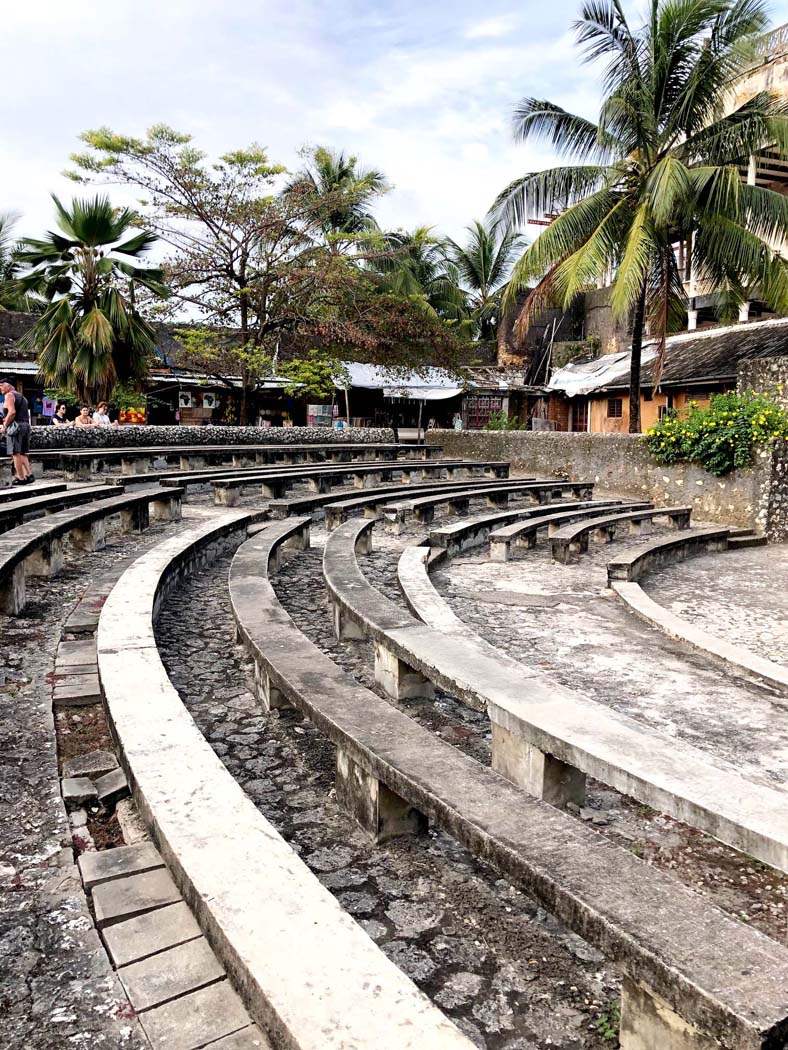
When we researched activities, a historical tour of Stone Town by an experienced guide always came up as the number one thing to do. We booked ours through ZanziTaxi and our guide met us at our hotel. Guides vary in price but are around $30 and your entrance fees to the various museums and churches are included in this price. Stone Town is the old part of the capital city (Zanzibar City) and is a UNESCO World Heritage Site. It’s small (you can walk end to end in less than 20mins) with around 30,000 residents so a walking tour of Stone Town is easily achievable. We were so glad we had a guide to show us around as Stone Town is a maze of tiny streets and alleyways! Without a map or GPS you’d never find your way around unless you’d been there for a couple of days!
Stone Town is so-called because all of the buildings were made entirely from stone, usually coral, with no cement. The city was first colonised by the Portuguese, and later the Persians before becoming a British protectorate. Building styles and designs from all those influences as well as African can be seen whilst walking around. My favourite aspect was the amazingly intricate and finely decorated wooden doors all around the city. Some with beautiful carvings and some with huge metal spikes (a throwback from Indian influences when the spikes prevented elephants from bombarding buildings!). No elephants in Zanzibar but the stylistic influence still remains!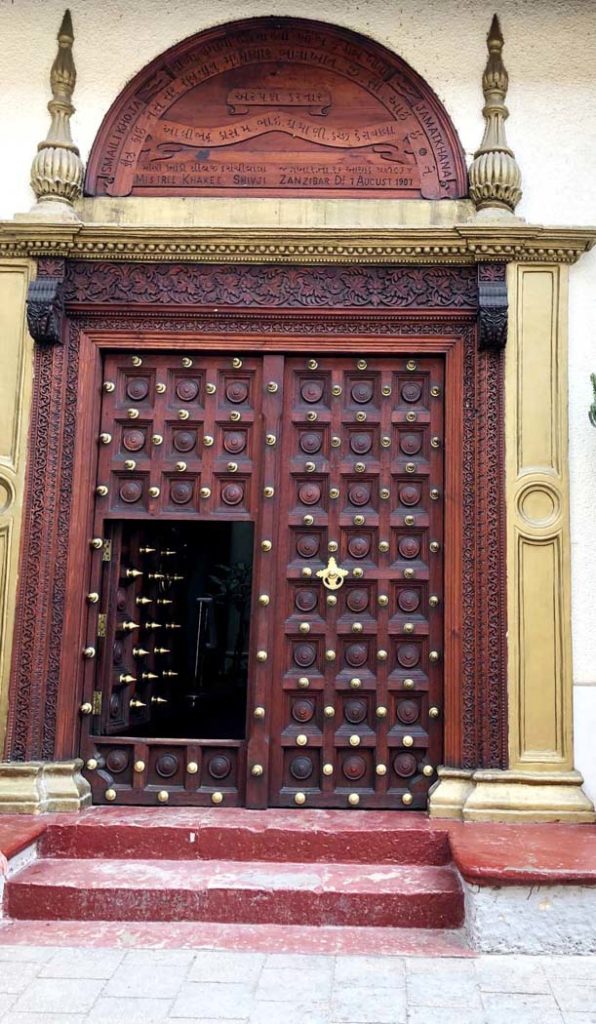
We started our walking tour of Stone Town at the Old Fort. It’s the oldest structure in Stone Town with much of it missing now but some of the walls and turrets still remain. It was built between 1698 and 1701 but never saw much military action. There is an open-air amphitheatre inside, where performers showcase their talents in exchange for a few dollars, and it is lined with small stalls selling traditional Zanzibarian products for the tourists.
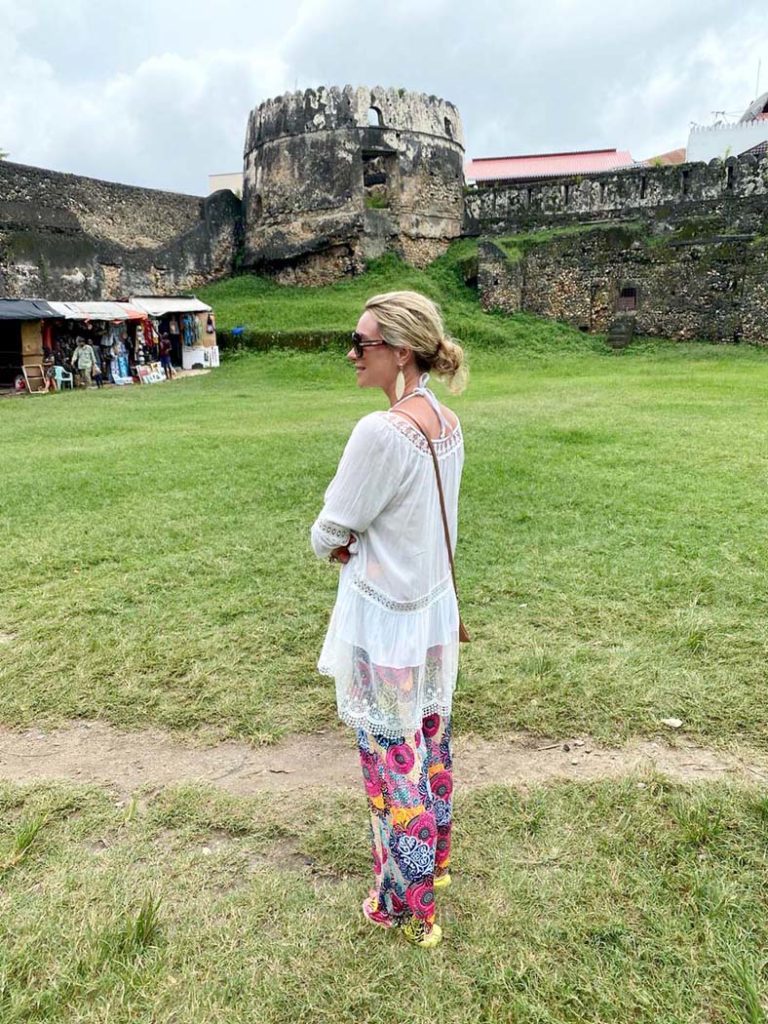
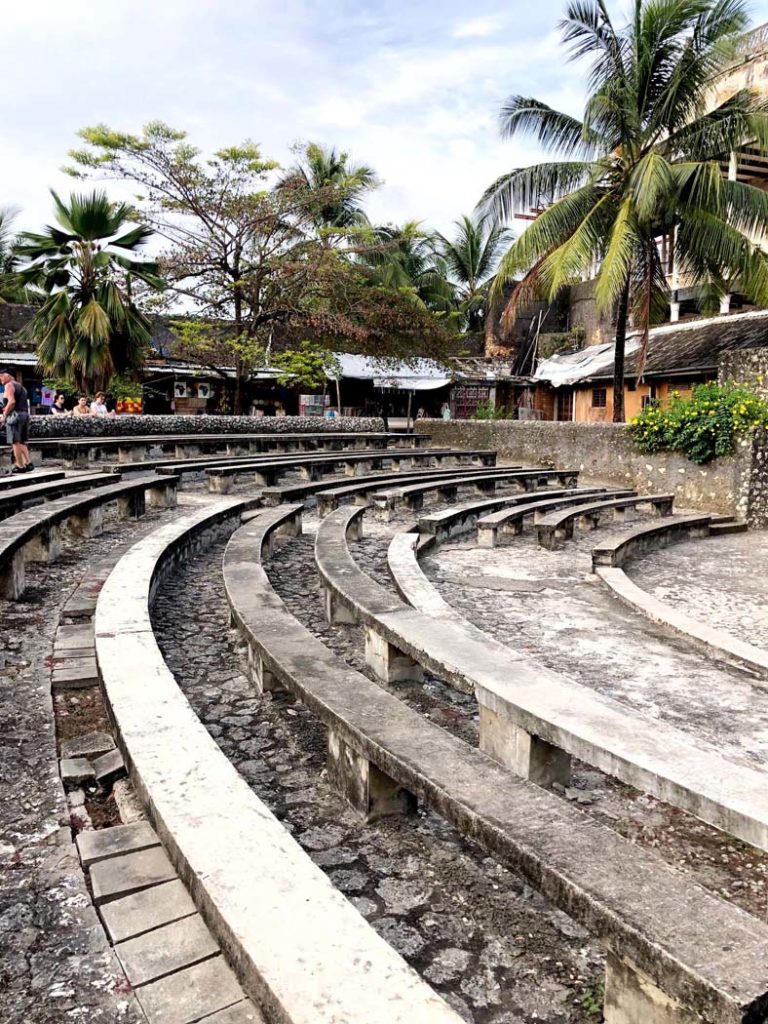
Next, we skirted the House of Wonders which is the largest building in Zanzibar. It was at one time the most magnificent palace and its claim to fame is that it was the first building on the island to have an elevator. At the moment though, it is currently under restorations so we couldn’t go in.
 However, we headed next door to the Palace Museum which is inside the former Sultan’s Palace. It used to house members of the Sultan’s family and became the official residence of the Sultan of Zanzibar from 1911 until the revolution of 1964, when it was renamed the Peoples’ Palace. Inside is a museum, opened in 1994, and dedicated to showcasing the way the sultan and his family would have lived. Entrance fee is $3 but this is usually included in the price of your tour guide.
However, we headed next door to the Palace Museum which is inside the former Sultan’s Palace. It used to house members of the Sultan’s family and became the official residence of the Sultan of Zanzibar from 1911 until the revolution of 1964, when it was renamed the Peoples’ Palace. Inside is a museum, opened in 1994, and dedicated to showcasing the way the sultan and his family would have lived. Entrance fee is $3 but this is usually included in the price of your tour guide.
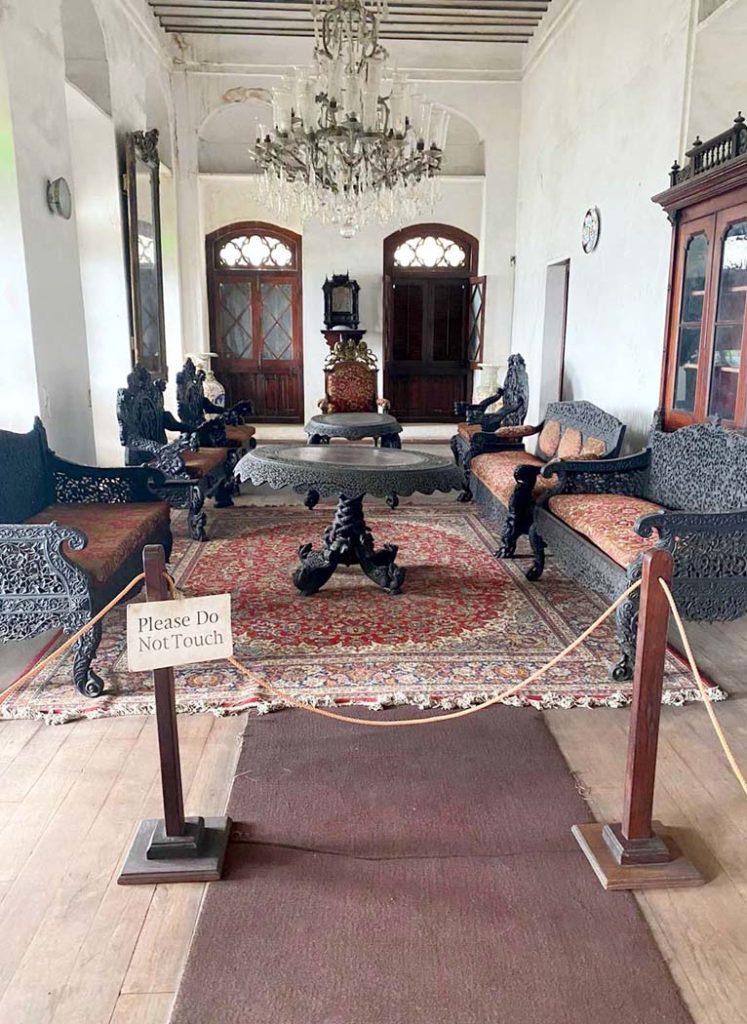
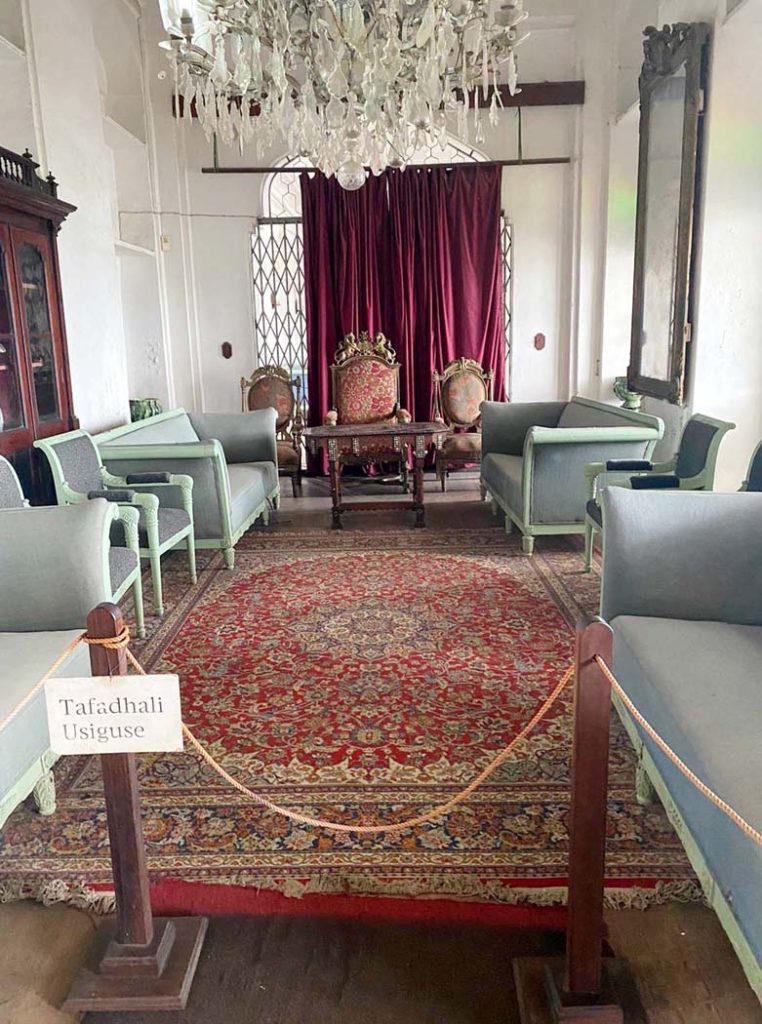
After the People’s Palace we walked along the seafront and saw the port which is where the passenger ferry from Dar Es Salaam docks. After the creation of the port and subsequent destruction of some of the old buildings in the area Stone Town was designated a UNESCO World Heritage site to protect it from further construction. We wandered through the Forodhani Gardens which are the site of the legendary food market as the sun sets but are very quiet during the day.
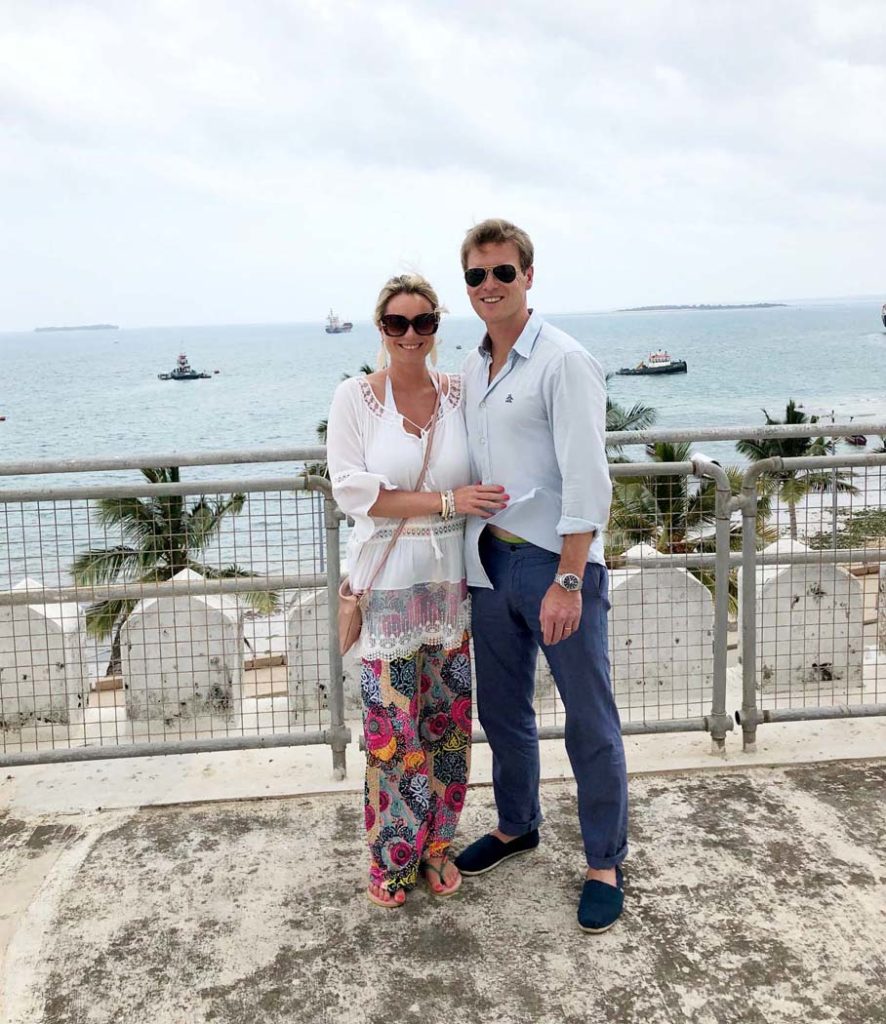
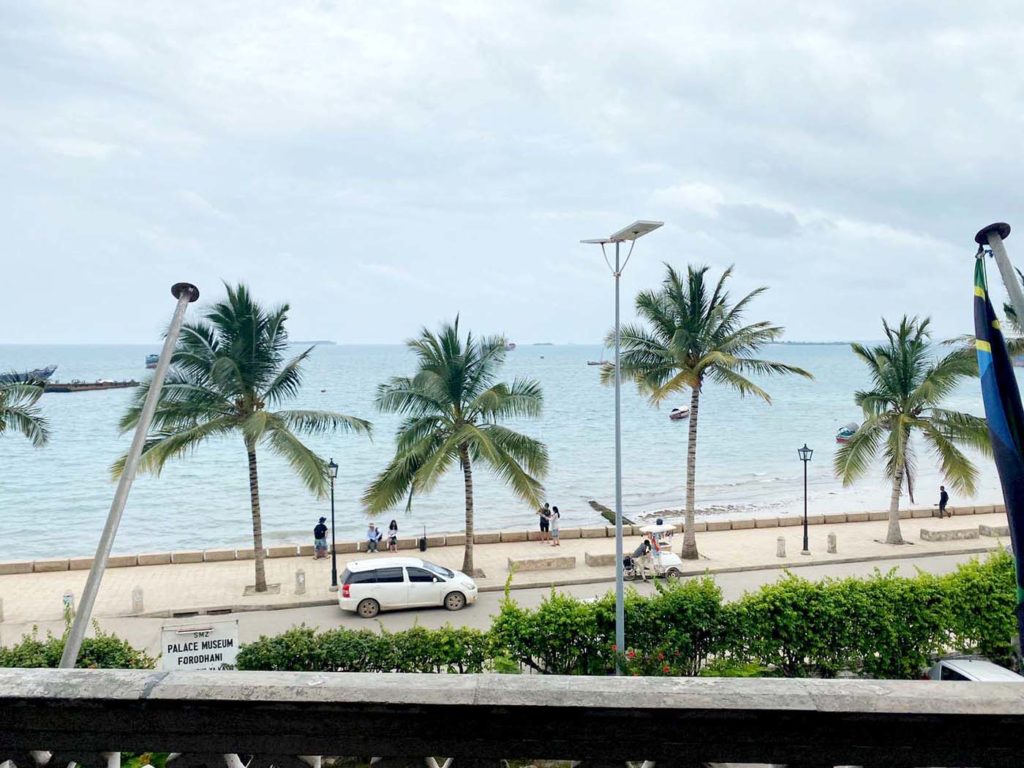
After that we headed into the maze of alleyways that makes up most of Stone Town. Our goal was the Catholic Cathedral – one of only two Christian churches in the city. It was built between 1873 and 1883 by French missionaries with funding from Oxford University. We were lucky enough to pop our heads in as the Sunday Mass was going on. We didn’t stay long though (they’ve been known to last up to 3 hours!).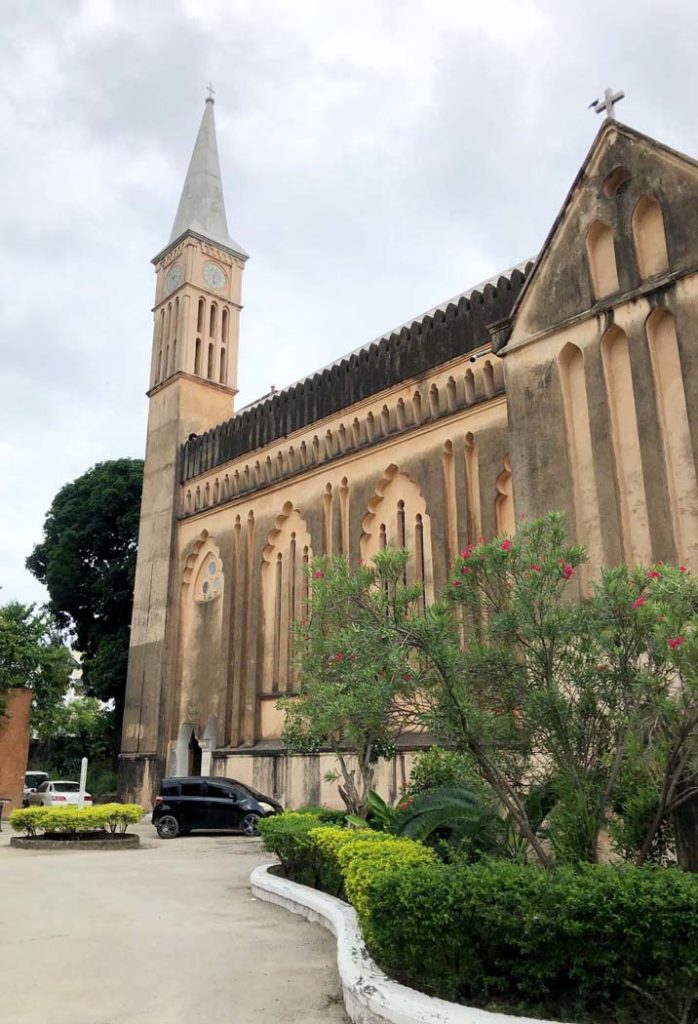
Top Tip: If you want to enter the Cathedral make sure you are wearing modest clothing – shoulders and knees covered up!
There is also a wooden crucifix in the church which is said to have been carved from the branch of a tree that once hung over Livingstone’s grave. This is because the Cathedral is built on what used to be Zanzibar’s largest Slave Market and Livingstone played a big role in having the Slave Trade abolished from Zanzibar. Apparently the altar of the church is positioned over the exact location of the whipping post. Under the Cathedral were the cellars where it is said that slaves were held before being sold at market. It’s incredibly cramped in the tiny cells and harrowing to think that up to 50 people at a time could be squeezed into such a small space. There is a $5 entry fee, which also permits you to visit the cellars, but again this should be included in the price of your tour.
Outside the Cathedral is a sculpture in memory of the slaves who were bought and sold in Zanzibar. Zanzibar itself never took part in slavery but was the most important slave-trading centre of the time. Every year, about 40, 000-50, 000 slaves were rounded up and transported to Zanzibar where they were sold to the highest bidder. They were then sent off to their new owners, mainly in the Middle East and India. The Slave Trade was outlawed by the British in 1873, when David Livingstone (of ‘Dr Livingstone I presume?’ fame) led an anti-slavery campaign, hence the crucifix in the Cathedral.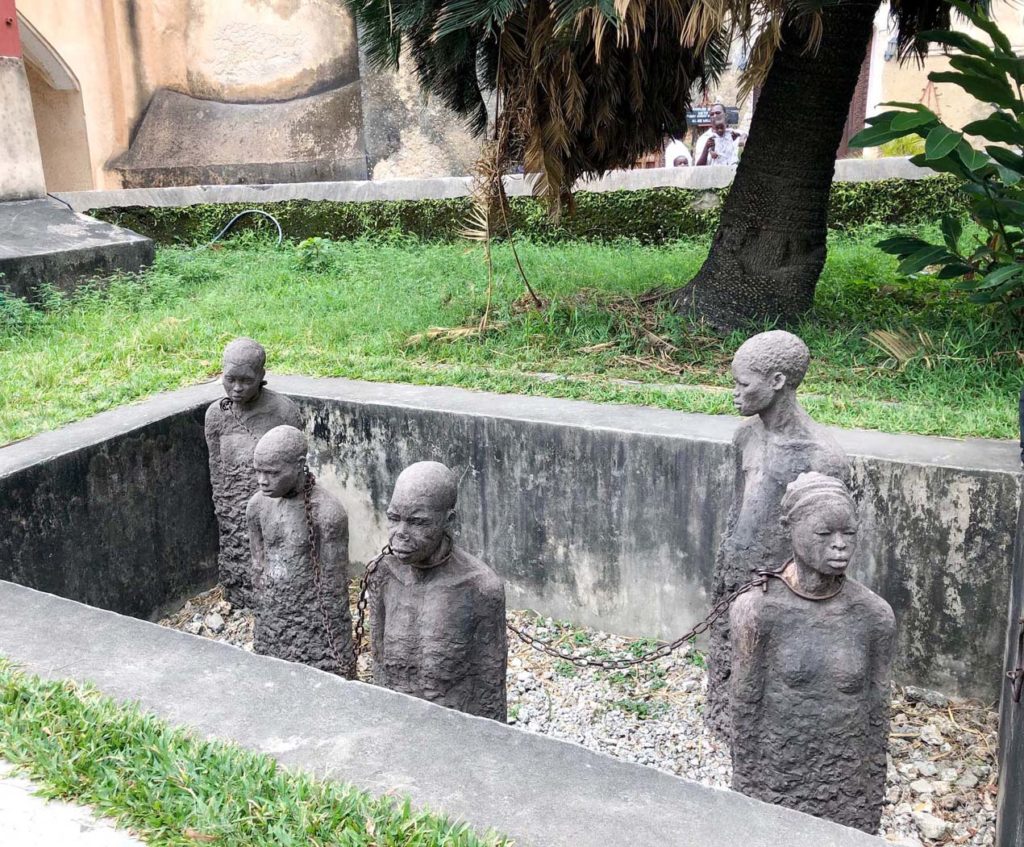
There is a Museum next door to the Cathedral, dedicated to showcasing the rise and fall of the Slave Trade and the atrocities that ensued. There is a lot of information and it’s a really informative way to spend half an hour reading through the history and the personal accounts.
Next stop on our walking tour of Stone Town was a visit to the Darajani market. This covered market is quite an assault on the senses and is where all the locals do their shopping. It is so incredibly vibrant and it is open from 8am to 6pm every day. People travel from all over the island to sell their wares and it’s amazing to see all the bartering and chatting going on. We wandered through the amazing meat and fish halls which were rustic, to say the least, and even tried our hand bartering for some spices to take home. We ended up with some Zanzibar Coffee along with some Masala spices which I used to make my Zanzibar Coconut Chicken Curry when we returned home!
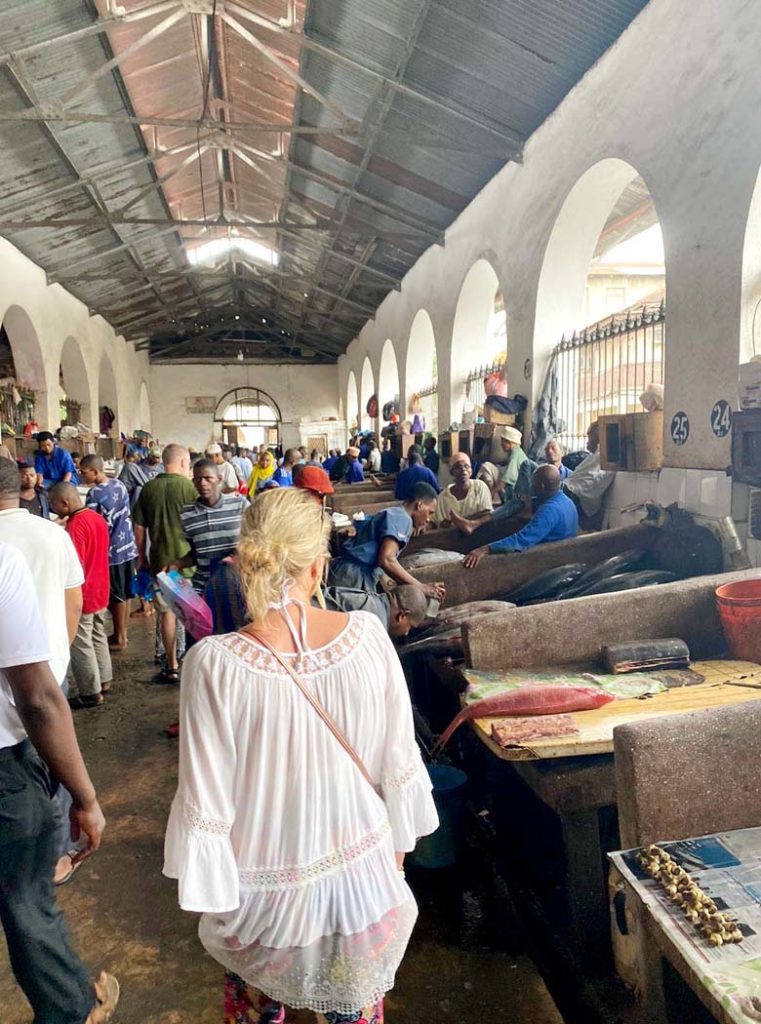

Top tip: Most vendors are prepared to sell to you for 50-60% less than their opening price
The market spills out onto the road with the sheer amount of stalls and produce on offer. There are fruits and vegetables, souvenirs, clothes, fruits and even antiquities to buy.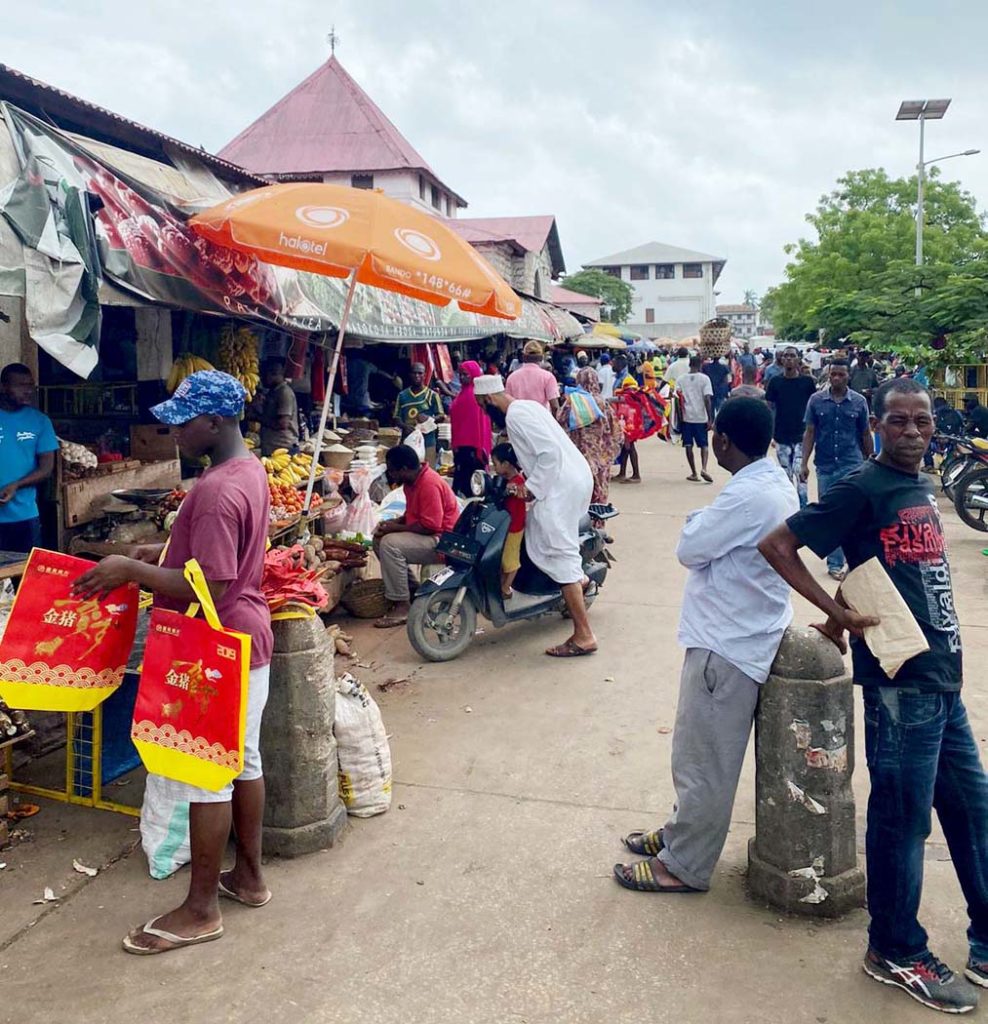
Finally on the way back to our hotel we passed through Jaws Corner, a famous square where the older men sit and play cards and Bao (a traditional Zanzibarian board game). Our final stop was just across from our hotel where our guide pointed out Freddie Mercury’s house. He was born in Zanzibar and spent a portion of his childhood there and there is a monument dedicated to him at this house where he used to live. You can’t go in but there is also a museum dedicated to his life that you can visit a few streets away!
The tour lasted around 2-3 hours and was definitely good value for money. Learning all about the history, we felt like we really got a sense for why Zanzibar is the way it is. Our guide was so knowledgeable and encouraged us to ask any questions that we had. It also meant that we felt more comfortable wandering around on our own for the rest of the day as we had a sense for where we were and what the area was like. I’d definitely recommend this walking tour of Stone Town as a really informative way to spend a couple of hours as it gives you such an insight into the Zanzibarian history and way of life today.
Top Tip: Make sure to tip your guide a few $ at the end if you enjoyed the tour and bring a few spare dollars for any other guides you may need to tip.
See my What to do in Stone Town post for more ideas for your Stone Town trip!
Pin A Historical Walking Tour of Stone Town for later
Related Posts
3 thoughts on “Historical Walking Tour Of Stone Town, Zanzibar”
I'd be thrilled to hear any comments you have. I read each and every one and it means so much to me!Cancel reply
This site uses Akismet to reduce spam. Learn how your comment data is processed.
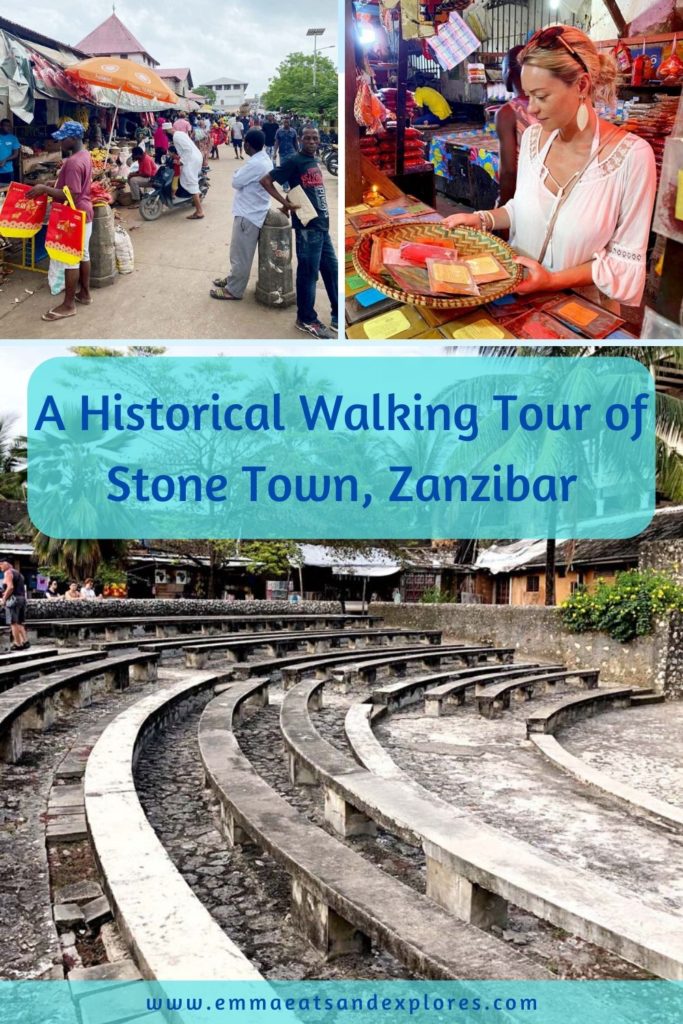
Sounds really interesting and great value.